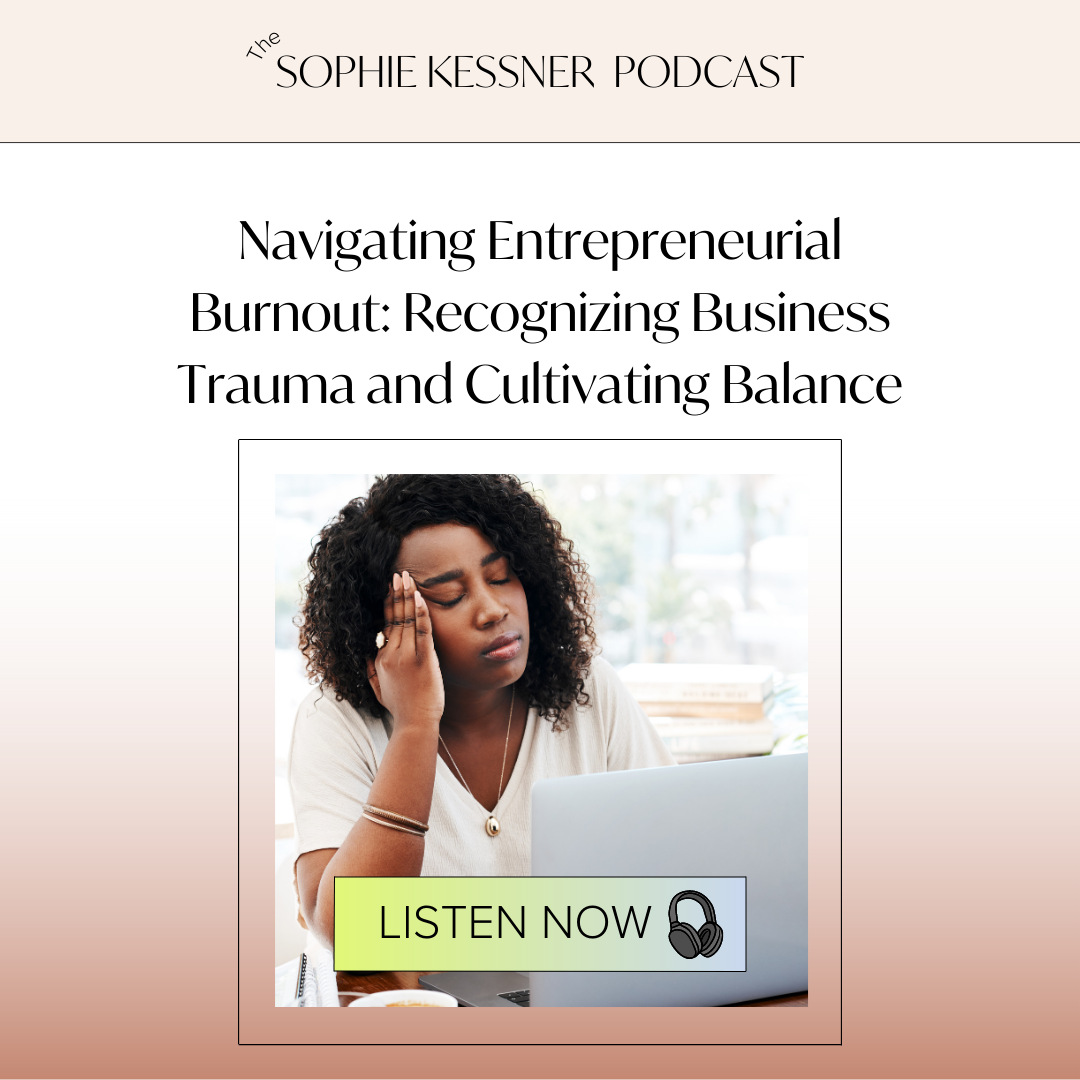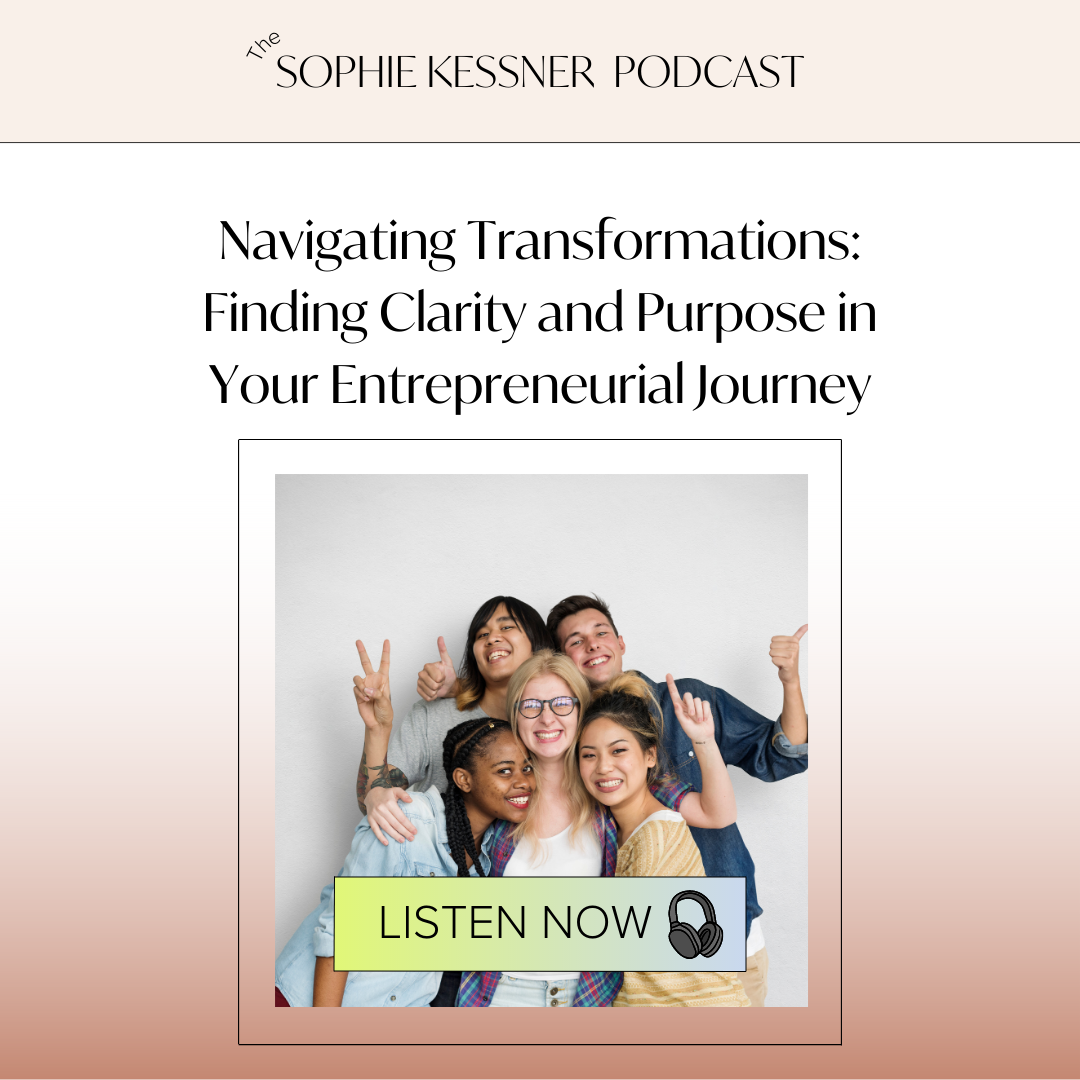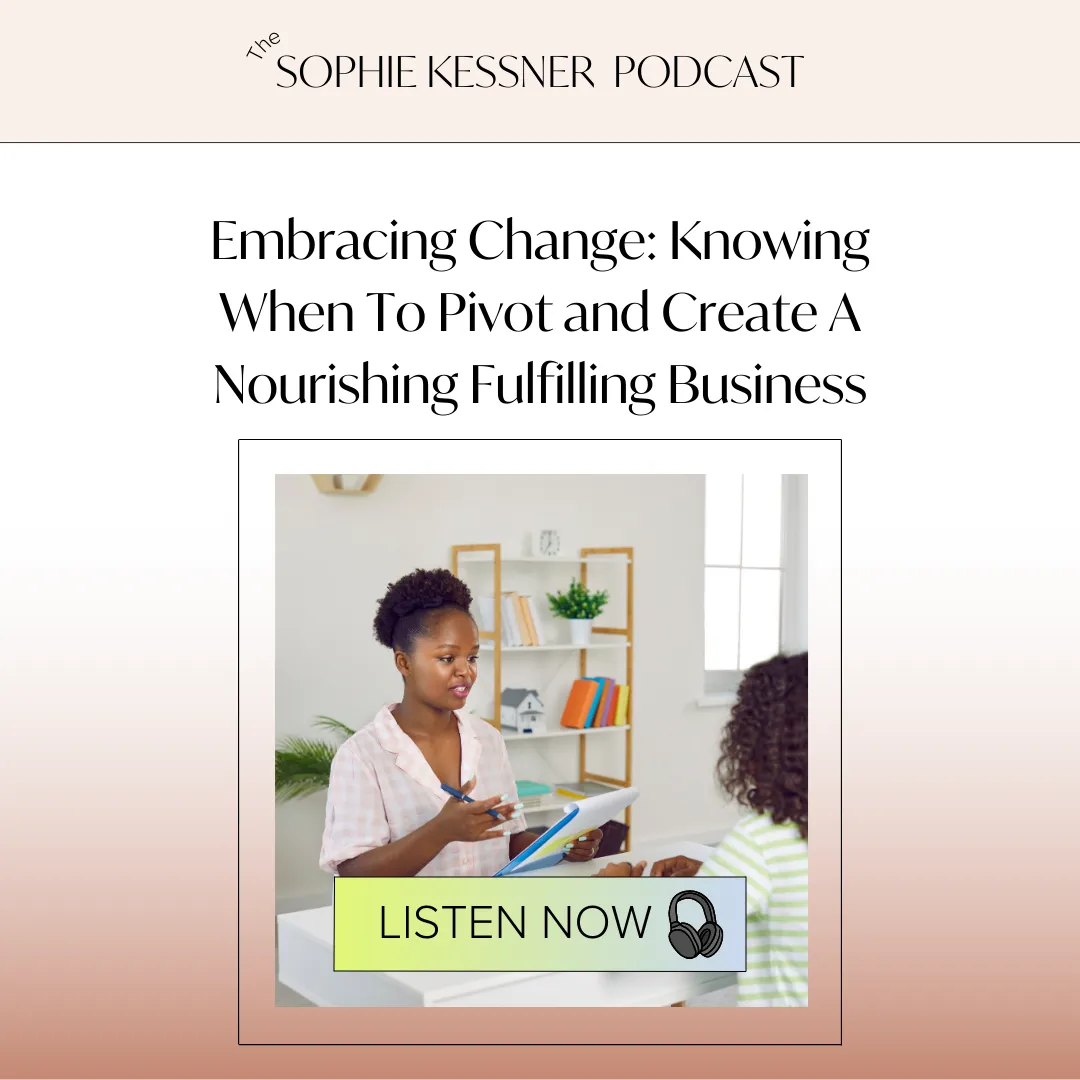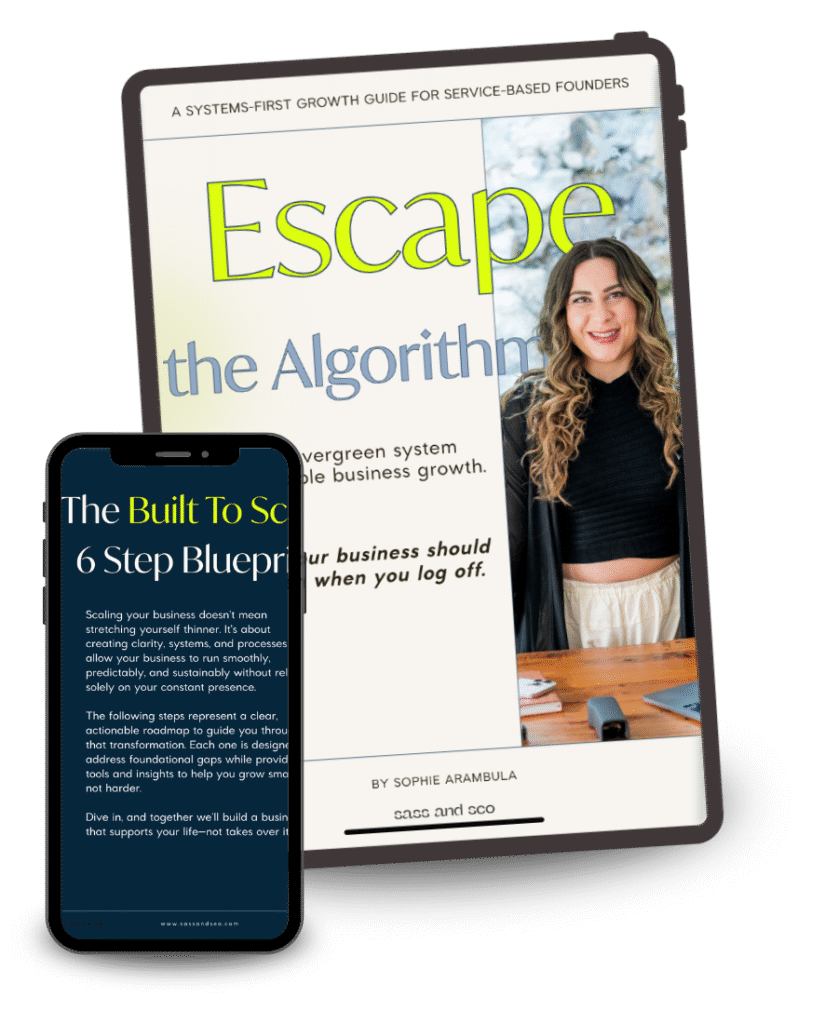Summary
In this power-packed episode, we continue our insightful conversation on financial literacy and business models, exploring how to set up your business model in an equitable way, pay yourself an equitable salary, and market and sell your product. Listen in as we discuss the importance of understanding the cost of running a business model to ensure we’re not over-romanticizing the idea and to protect ourselves if we don’t hit our goals. We also talk about the benefits of having an evergreen offer or service to keep your business running year-round.
We examine how to create boundaries between your business and personal life, avoiding feeling codependent on the business to meet our needs, and creating diversity within the company and its offerings. Join us as we discuss how we can have different businesses to express different aspects of ourselves, and how to set boundaries so that we are not dependent on a certain business model to meet all of our needs. Don’t miss our valuable tips on scaling without pressure, allowing the business to have consistency and grow in a way that feels manageable.
We’re picking up where we left off in Part 1: Financial Literacy and diving into how to apply your owner’s pay, business expenses, and profit/loss statements to your pricing, business structure and overall business model.
HIGH COST MODELS WITH LOW PROFIT MARGINS
Depending on the type of business model you run, what the business generates in total sales and what you profit as the business owner can be very different numbers which is why it’s imperative for us to understand profitability and profit margins while also looking at the operational cost of a business model to decide what makes the most sense for you and the type of business and life you want to run.
Below is an estimate on the most popular business models in the online service based space:
One on One Private Coaching, Consulting or Mentorship
High profitability, low cost, high Client delivery Time
When you’re delivering a service like one on one coaching, you are the person who is showing up to the calls, sending the notes, and providing all of the support between sessions for your client which means, you are the biggest expense of the offer and what you are paying yourself to deliver each of the components of the service.
I invite all clients to first assess each deliverable that goes into a service and estimate the time they spend delivering each component of the offer on a weekly, monthly and general lifetime of the offer to help them better assess what their time estimates and hourly rate actually is.
Example:
12 week private coaching:
- Weekly 60-minute zoom calls (12 hours total)
- Time spent preparing for each call 20 minutes (4 hours total)
- Time spent sending notes to the client after the call 30 minutes (6 hours total)
- Time spent in email support or voxer support each week between calls 20 minutes (4 hours total)
Total time spent over the course of 12 weeks: 26 hours
If you’re charging $2,000 for all 12 weeks of coaching, you’re averaging a $77/hour pay rate before considering the cost of time spent marketing and on sales calls. (Total Cost of program / Total Hours Spent in Client Delivery = Hourly Rate)
Based on what you know your bare minimum income needs to be, we can better assess if the current offer structure (price and time spent delivering services) is scalable and make sense for your life.
In this case, we want to calculate the total hours per week for ONE private client (total hours spent delivering / total weeks = weekly hours) which is ~ 2 hours per week on client delivery for one client.
We take this number and look at the total time we have available for client delivery each week and each month, let’s average and say 10 hours per week for client delivery which means, we have the max capacity for 5 private clients at this rate while staying within our desired 10 hours for client delivery work.
This also means that we would max out at $10,000 in total revenue over the course of the 12 weeks OR roughly $3,334 in total revenue per month and wouldn’t be able to scale beyond this threshold unless we did one of three things:
- Increased the total cost of the service
- Decreased the time spent in client delivery mode so we can take on more clients
- Increased the number of hours we want to be working in client delivery mode each week
Alternatively, we can look at additional business models to incorporate into our practice that have higher scalability.
The Cohort Group Coaching Model
Medium-High Profitability, Low-Medium Cost, Low-Medium Client Delivery Time
This tends to be the natural alternative for a service provider who’s maxed out on private clients and takes their private practice into a one-to-many setting such as a group model. In this model, it allows the service provider to work with larger groups of people at one time instead of splitting their time amongst multiple clients.
Now, instead of spending ~2 hours per week PER client (10 hours total for 5 clients), the service provider now has the capacity to work with 5 clients in ~2 hours TOTAL per week freeing up more time for other activities OR increasing their capacity for more clients. The downfall to group programs in the decreased profit depending on how you want to scale which leads us to considering the layers:
Group programs are less personalized and tend to be priced lower than your private practice thus requiring you to have a higher volume (more clients) in order to hit the same revenue goals. The perceived trade-off in this model is the idea that you’ll have more time freedom because you’ll be supporting more clients in less time while generating a similar or higher income.
Example:
12 Week Group Coaching Program with a max capacity of 10 total clients
- 12 weekly 2-hour GROUP Coaching calls (24 hours total)
- Time spent preparing for each call 20 minutes (4 hours total)
- Time spent sending notes to the clients after the call 30 minutes (6 hours total)
- Time spent in email support or slack support each week between calls 20 minutes (4 hours total)
Total time spent over the course of 12 weeks: 38 hours
If you’re charging $1,000 for all 12 weeks of the group program PER PERSON, you’re averaging total potential earnings of $10,000 and an hourly rate of $263/hour pay rate before considering the cost of time spent marketing and on sales calls. (Total Cost of program / Total Hours Spent in Client Delivery = Hourly Rate)
In this case, we can see that the hourly rate you pay yourself IF/WHEN you have a FULL group, more than triples. This is because you’re working with more folks within that timeframe and having each of them pay equally.
Now the downside of this pricing structure is what’s required in order to hit your monthly revenue goals, is because we’ve priced the group program at 50% below the current rate of our 1:1 program, we’ll need to take on at least double the number of clients in order to hit the same income.
This means we’ll need to rely on higher volume to bring in MORE clients through greater marketing efforts.
Now if you want to scale your group program, we want to calculate based on the number of hours per week for the full group of 10 clients, by using the formula: Total hours / total weeks = ~3 hours per week for total time spent in client delivery per full cohort of 10 clients.
This means, if we only want to be working a total of 10 hours per week, we have the capacity to take on up to THREE different groups of 10 people at one time while operating within our desired 10-hour weekly client delivery time. This means, are potential earnings have gone from $10,000 total revenue for 12 weeks or $3,334 per month to instead, $30,000 total revenue for 12 weeks or the potential of $9,999 per month IF we have three FULL groups of ten clients in each group.
Of course, just based on numbers, this model sounds incredibly enticing EXCEPT for the fact that we have to consider the volume that’s required in order to fill up the group programs to the size we would want them to be for them to make sense, which means we’d need to spend more time focusing our time and energy on marketing and sales efforts to increase the number of clients we have enrolling at one time.
LAUNCH MODEL
Hence, the fluctuation between being in marketing and sales mode then oscillates to client delivery mode in the predominant launch model that’s taught in the industry. Remember, no model is inherently bad, wrong, or evil. It’s about understanding the structure of the model and how that works with your personal life goals and the capacity you have available to deliver the service along with how you really want to be spending your time.
The pros of launching include the ability to generate your entire annual revenue within a small window of time, i.e. your launch. If you’re “launching” or enrolling students into your program over the course of 3-4 months, you only have to spend those 3-4 months out of the year actively marketing and selling and then can spend the next 12 weeks only focused on client delivery mode.
The cons happen when your launch goals aren’t met, and you end up falling short of your total earnings or not filling programs which can put you in a tricky predicament as you’re now having to find other ways to supplement revenue that wasn’t made within the 3-4 month launch window you may have had previously. Additionally, some folks may not fair well when having to regularly oscillate between being in “marketing mode” versus “client delivery mode” and find it stressful to have to move between each season with the added pressure of needing to make it all happen within a short period.
EVERGREEN MODEL
Counter to the launch model, evergreen does not operate in cyclical seasons but instead, is always open for enrollment with a set schedule of weekly and monthly calls that clients move in and out of. Again, this model may not be the best fit for certain types of programs or content but may be better for certain folks and how they structure their lives.
The pros of running your group as an Evergreen model instead of a Launch Model are the removal of time pressure and the need to generate all of your revenue within a small amount of time. By adjusting to an open cart approach, you’re able to focus on long-term marketing that is always enrolling for your program or service. This model also allows for you to be bringing in new sales every month and have more flexibility with your earnings.
The cons of an Evergreen model are the loss of the tight-knit group that often comes with a cohort that starts together and goes through the experience together with everyone moving at the same pace; for some folks, this is an essential component of the experience and may be part of the reasons they opt towards the launch model or cohort approach instead. Additionally, because there is no deadline on when someone needs to enroll by, it can create a lack of “urgency” for folks to purchase or enroll, which is where business owners will need to be more strategic about how they enroll and market their program.
The Self Study Course Model
High profitability, low cost, low client delivery time
This tends to be a popular choice for folks looking to scale a program or product through volume who have larger audiences. There are a few reasons why this model may not be best on it’s own though, including the fact that it needs time to build up a client base in order for the pricing and delivery of it to make sense but it’s MORE than possible to scale a self study course to be incredibly successful.
A self-study course often has zero to minimal deliverables since the course only needs to be created one time and is mass produced unless the business owner decides to include monthly Q&A calls or community support as we offer inside our program, The Online Business Automator. In this case, you’ll want to calculate the total amount of time you spend delivering each month and run projections on an annual and monthly basis.
Example:
self-study course
- Monthly 90-minute Q&A Call (18 hours total over one year)
- Customer Support Emails 1 hour per month (12 hours total over one year)
- Managing the online community 2 hours per month (24 hours total over one year)
Total hours spent in client delivery over the course of a year: 52 hours (OR ~4.5 hours per month)
Because a self-study course does not have a cap on the number of clients you can enroll at any time, your earning potential is essentially limitless and allow you to spend the majority of your time marketing the course to continue generating revenue year-round. For the sake of putting numbers to paper, let’s say the self-study course is a total of $500 per unit sold and you have the goal of generating a similar amount of revenue each month and each year as you did in your private coaching or in your group model.
This means, in order to generate the average $3,334 per month made from your private clients, you’d need to be selling at least 6-7 units each month. Alternatively, if you wanted to generate $10,000 per month in course sales, you’d need to sell upwards of 20 units per month.
Because your hourly rate is based on the total number of sales you generate each month and each year, your main priority when running a self-study course business model is pouring all of your energy into the marketing efforts of that course.
BUILDING TO SCALE
The biggest mistake we see in the industry today is scaling businesses purely for the sake of scaling without taking into consideration the impact that such growth will have on one’s life, health, and mental/emotional wellbeing. Before considering the idea of scaling your business, we want to start asking a few important questions to understand what the “scale” actually is for the growth the business can handle to be managed within your existing life.
Core Questions For Contemplation
- What are you running the business for? i.e. what’s the purpose of having the business?
- How do you really want to be spending your time on a day-to-day basis?
- How much time do you really want to be spending working in and on the business on a weekly and monthly basis?
- What specific tasks do you love doing inside your business?
- What tasks do you not want to be doing inside your business?
- How much revenue do you want to be generating to sustain a comfortable life for yourself and your family?
Instead of picking a business model just to scale it, we want to sit with these questions to unpack the kind of business that makes the most sense for YOU right now.
For instance, if you only want to be focused on client delivery and love working direct with clients, a self-study course may not be the best approach as you’ll be required to spend the majority of your time marketing instead of doing what you enjoy, i.e. working with clients.
If you only have a certain amount of hours available each week because you’re the primary care taker, have health issues, or whatever other reason, it’s imperative to take this into consideration in building out the structure of your business so you’re not burning yourself out chasing your tail to no end.
When your client delivery has been established, you have the freedom to start focusing energy and effort on the marketing and sales of the business, which, if you’re an online entrepreneur, is the core of your job.
MEETING YOUR NEEDS OUTSIDE OF YOUR BUSINESS
Finally, the core of most entrepreneurial pivots, shifts, and changes in business tends to derive from our insatiable need for change and evolution which can be the Achilles heel of powerful personal brands that want to have a major impact while simultaneously looking to the business you’ve built to be the main source of how you get all your needs met.
I’ve shared a lot about the impact of making your business the main thing in your life, but want to reiterate this imperative lesson here again because it’s crucial for folks seeking to scale sustainable brands and businesses that aren’t constantly on the peak of collapse or burnout.
Your business is built for one purpose, to generate revenue.
HOW it generates revenue is a matter of your business model.
Your business is not responsible for meeting all your needs which is why it’s essential for you to have a healthy relationship to your business AND a quality life that exists separate from your business where you can truly unplug and exist in a way that has nothing to do with your business.
The ability to run a business doing work you truly enjoy and pay yourself a generous salary while being able to have a quiet and private life offline is the real goal.
– Sophie Kessner
Most folks start businesses because they want to escape the 9-5 grind of a day job but are often quickly fooled by the amount of time, energy, money, and unpredictability that comes with the risky venture of building your online brand. If we’re not careful or intentional about how we’re building what we’re building, we can easily fall into traps of overworking where are business becomes all consuming and we no longer know ourselves outside of the business.
For some folks, this works.
For me, and likely for those who’ve read along this far, this isn’t the business you’ve dreamt of.
So while it’s crucial to dedicate the time, energy, and money required to get your business off the ground, its even more important for you to build the business in way that’s going to be sustainable for an extended period of time.
This means you can sustain that same level of energy, commitment, and time for years on end without jeopardizing your personal well-being, health, or finances.
Episode Keywords:
Financial Literacy, Business Models, Equitable Salary, Marketing, Selling, Business Expenses, Launch Model, Profit Margin, Evergreen Offer, Codependency, Diversity, Boundaries, Scaling, Evolution, Growth, Consistency, Journaling, Contemplation












